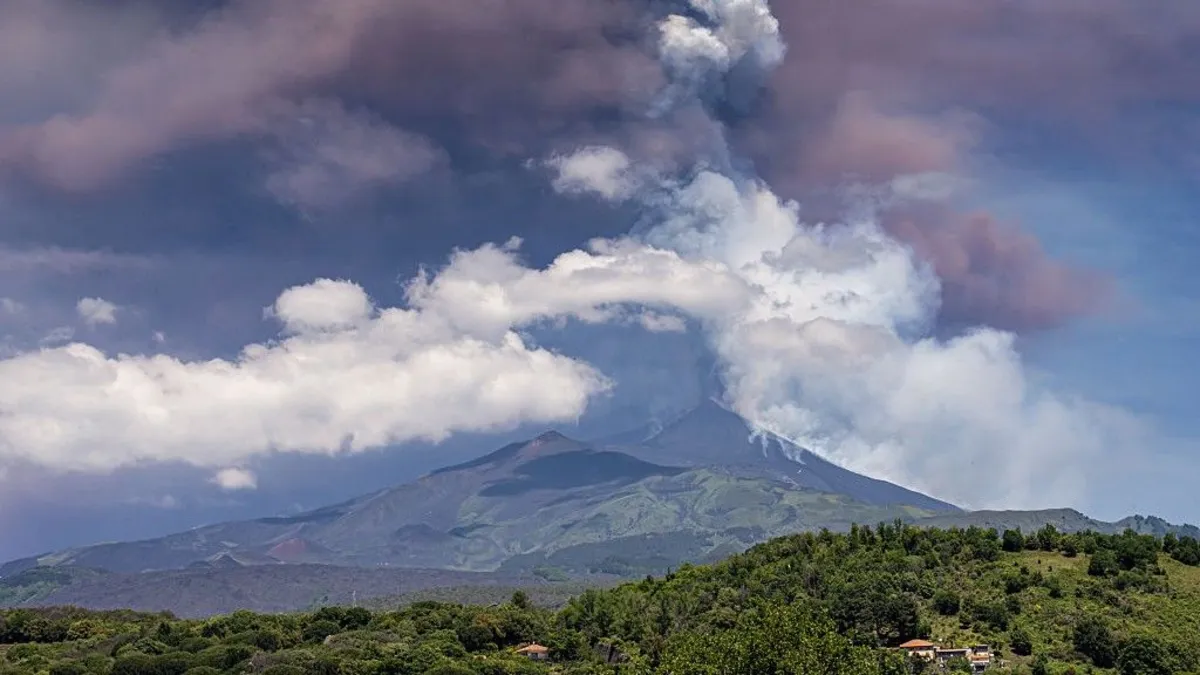
A newly discovered technique for monitoring magma movements beneath Mount Etna could significantly enhance scientists' ability to forecast volcanic eruptions. Mount Etna, located on the Italian island of Sicily, holds the title of Europe's largest active volcano. Its eruptive history is well-documented, spanning an impressive 2,700 years of human observation, although the volcano itself has been active for approximately 500,000 years. The most recent eruption, which occurred in June 2025, produced a towering ash cloud that reached heights of 4 miles (6.5 kilometers) and caused avalanches of hot lava blocks and debris.
While the June 2025 eruption was anticipated, allowing officials to issue timely warnings, predicting volcanic activity is not always straightforward. This new method developed by researchers at Italy's National Institute of Geophysics and Volcanology (INGV) aims to improve predictions of when Mount Etna might erupt. The study, published on October 8 in the journal Science Advances, focuses on a critical parameter known as the b value, which quantifies the ratio of low-magnitude to high-magnitude earthquakes in a specific region of the Earth's crust.
According to the researchers, changes in the b value can provide insights into how magma rises through the crust to reach the summit of the volcano. Marco Firetto Carlino, the study's lead author and a geophysicist at INGV's Etna Observatory, explained that tracking the b value over time reflects the evolving stress inside the volcano. As magma ascends, it induces stress changes within the crust, which can be monitored using this parameter.
Although the b value is a well-established parameter in the field of volcanology, the researchers employed a novel approach by utilizing an updated statistical model. They analyzed 20 years of earthquake data from Mount Etna, uncovering a strong correlation between the b value and the volcano's activity levels.
Mount Etna is situated at the intersection of the African and European tectonic plates, creating a vertical fracture in the Earth's crust known as a strike-slip fault. This geologic feature facilitates the upward movement of magma. The crust beneath Mount Etna is exceptionally thick, reaching depths of up to 19 miles (30 kilometers). As magma rises prior to an eruption, it does not simply replenish a single magma chamber; instead, it feeds a series of interconnected storage zones at varying depths.
The deepest magma storage zone is located 7 miles (11 kilometers) below sea level, connected to an intermediate storage system that extends between 2 to 4 miles (3 to 7 kilometers) deep. As the magma ascends, it navigates through a complex network of fractures before reaching the shallow storage zone located above sea level, within the volcano's structure.
The wealth of data available due to Mount Etna's frequent activity allowed researchers to extract insightful b values. By examining seismic patterns over 19 miles of crust from 2005 to 2024, they observed how these patterns varied across different crustal regions. Generally, crustal areas with active magma storage zones exhibited higher b values compared to more stable regions. This phenomenon occurs because active zones tend to generate more small earthquakes than larger ones, as the rocks become weakened and fractured due to the movement of magma.
Firetto Carlino elaborated that when magma releases volatiles, these materials permeate surrounding rocks, facilitating the slipping of small fractures. Conversely, more stable regions of the crust tend to generate larger earthquakes since it requires greater force to fracture solid rock, leading to lower b values.
By continuously monitoring the b value, researchers may be able to track the ascent of magma through the crust, from the initial deep storage zones to the shallow storage zone prior to an eruption. This innovative approach could significantly enhance the ability of scientists to estimate eruption timings at Mount Etna.
According to Firetto Carlino, monitoring the b value presents a robust method for assessing the evolving state of the volcano before eruptions occur. While Mount Etna served as an ideal case study due to its layered magma storage zones and extensive seismic catalog, the findings may also be applicable to other volcanic areas. In principle, the b value could be used to track magma movements in various locations, provided that sufficient earthquake data is available and that these events are well-distributed across different crustal sectors, as established by prior geological studies.